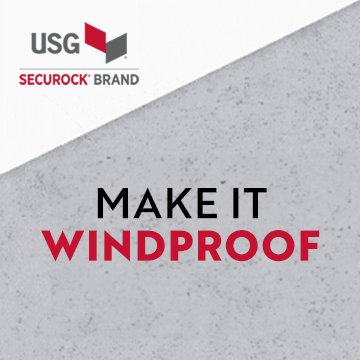Underlayment for roofs
« Back To Roofers TalkWhat and which one will pass for a 3/12 pitch mobile home
Roofing underlayment is a water-resistant or waterproof barrier material that is installed directly onto your roof deck. It is applied under all other roofing materials as an added layer of protection from severe weather. 3 basic types are asphalt-saturated felt; rubberized asphalt; and non-bitumen synthetic. Roof restorations company use all of these according to the demand of the property owner.
Coating your roof is equally as important as roof underlayment. To ensure your roof stays weatherproof all year round, take care of it and reach out to EPDM Coatings. |
seen-it-all Said:tarstrip Said:Randy Said: What and which one will pass for a 3/12 pitch mobile homeIce and water guard on the entire roof deck then install felt paper or synthetic underlayment over the ice and water guard to prevent the shingles from fusing to the ice and water.That is unless you could care less about the next guy who has to replace your roof.Well Im going to be 60 this year and I predict that most of my work will last 25 years so I put the ice and water onto the plywood and shingle over that. It will make for good entertainment in my final years to watch some crew tear it off. I can wobble over with my cane and say I remember installing this roof back in 14 Will they beat an old man? :woohoo:
HaHa! That's a good way to look at it!
tarstrip Said:Randy Said: What and which one will pass for a 3/12 pitch mobile homeIce and water guard on the entire roof deck then install felt paper or synthetic underlayment over the ice and water guard to prevent the shingles from fusing to the ice and water.That is unless you could care less about the next guy who has to replace your roof.
Well I'm going to be 60 this year and I predict that most of my work will last 25 years so I put the ice and water onto the plywood and shingle over that. It will make for good entertainment in my final years to watch some crew tear it off. I can wobble over with my cane and say "I remember installing this roof back in '14" Will they beat an old man? :woohoo:
I double up on 30# and weave. unless its steep, then double 30 and valley metal.
clover83 Said: Do you guys line the valley w/ 90#?
90# is totally past. Haven't used it in 25 years.
I first line the valley with 12" creased metal for support- then underlayment and finally tarco valley flash which is like the ice and water shield but without the self stickum and much cheaper.
You curse.
Depends on how smooth the leftovers are and how many times you stab the decking trying to tear it up. Do you guys line the valley w/ 90#?
tarstrip Said: Ice and water guard on the entire roof deck then install felt paper or synthetic underlayment over the ice and water guard to prevent the shingles from fusing to the ice and water.That is unless you could care less about the next guy who has to replace your roof.
We don't use much ice and water guard in North Texas, but for those who have, what do you do on a tear off with all of this self adhered stuff? Do you just roof over it, replace the decking, or does it come off the decking?
Lay a tarp over the felt to keep the dew off and it will not wrinkle.
Randy Said: What and which one will pass for a 3/12 pitch mobile homeIce and water guard on the entire roof deck then install felt paper or synthetic underlayment over the ice and water guard to prevent the shingles from fusing to the ice and water.That is unless you could care less about the next guy who has to replace your roof.
And if you have to replace any rotted osb decking, be sure to put the slick side DOWN! ;)
Randy Said: What and which one will pass for a 3/12 pitch mobile home
If you are like most roof applicators, just throw on some cheap No. 15. The shingles will cover it up and no one will know the difference.
But if you are a roofing professional, you may want to read the shingle manufacturer requirements and use a minimum No. 15 felt underlayment DOUBLE COVERAGE for low slope application- that is, 17 inch exposure laps for 36 inch rolls (not 2 layers, one on top of the other). Now if you are a production roofer and can shingle what you tore off in one day, that's fine. But, if you have to leave the underlayment exposed to any moisture it will wrinkle and ruin. So, you may want to up grade to a synthetic underlayment which is much more expensive and will withstand any moisture without deterioration. Just use the same double coverage for low slopes.
Assuming we are trying to be thorough, let's not leave out the SBS underlayments, the HDPE films with a butyl back like Grace Ultra, or the old Nicolet asbestos felts we once had to use w/wood systems.
I always keep some asphalt/glass Roofer Select on hand for the rare 3-tab job I don't want distortions on or anything telegraphing through.
Speaking of little pieces, every now and then we tear off an old one that had paper strips instead of mylar on the back of the shingles to keep them from sticking in the bundle. Those things relentlessly fly loose and flutter everywhere. You try to pick them up and they crumble up into pieces of pieces. Makes doing a professional clean-up a complete drag. They pile up like leaves but they are just so wrong.
If your tearing off a shingle roof on a mobile home just cross your fingers and hope they didn't use the old cardboard paper type stuff for underlayment. The last few I roofed did and the stuff tears all into little pieces. You'll need a leaf rake to get the crap off and cleaned up. Yuk Yuk. :huh:
Things may have changed, however, not sure if applicable standard building codes apply to mobile homes. Possibly things changed with the advent of IBC/IRC.
Anyhow - There was a long-lost application, that got misconstrued/interpreted somewhere down the line/many years ago, regarding low-slope shingle application, (2:12 - less than 4:12), which transformed from shingle double-coverage to underlayment double coverage.























